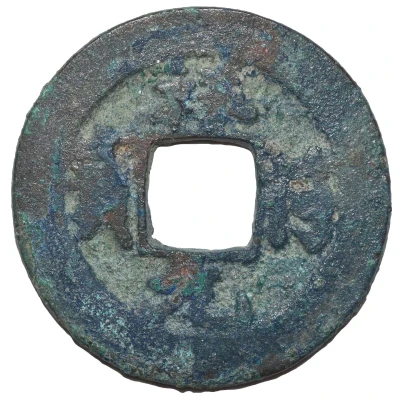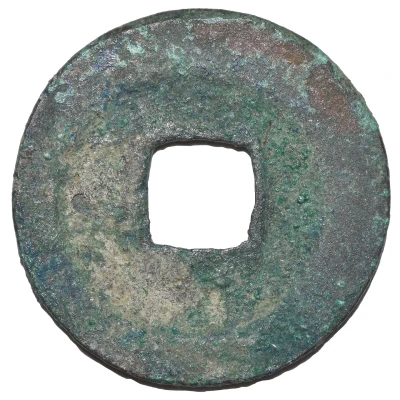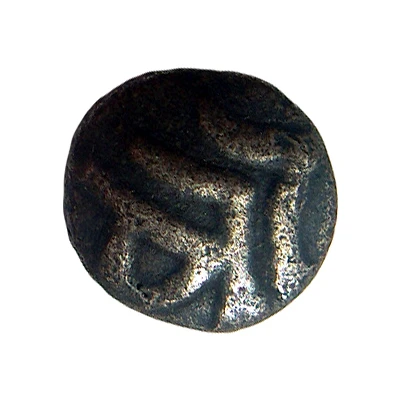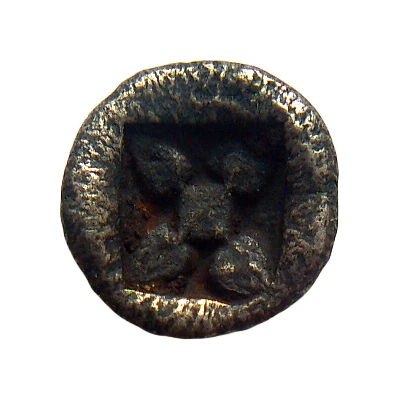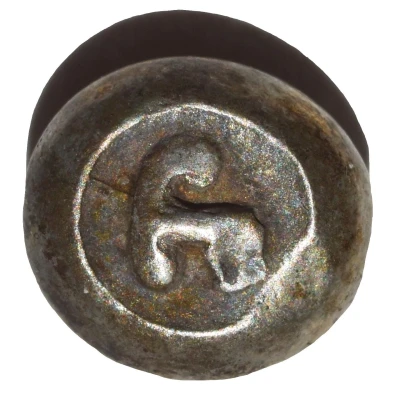
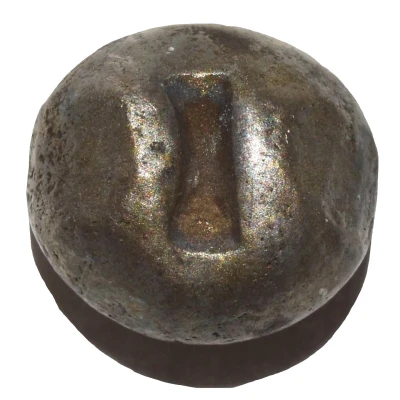

½ Namo ND
| Silver ("paktong") | 1.02 g | 7 mm |
| Issuer | Pre-Islamic kingdoms (Indonesia) |
|---|---|
| Type | Standard circulation coin |
| Years | 800-1000 |
| Value | ½ Namo = 8 Ratti |
| Currency | Srivijaya |
| Composition | Silver ("paktong") |
| Weight | 1.02 g |
| Diameter | 7 mm |
| Thickness | 3.5 mm |
| Shape | Round (irregular) |
| Demonetized | Yes |
| Updated | 2024-10-05 |
| Numista | N#300130 |
|---|---|
| Rarity index | 90% |
Reverse
Cleft.
Edge
Plain
Comment
Variously attributed to Hindu state in the vicinity of Malacca strait to southern Thailand, such as Srivijaya or Kalah. The location of the Isthmian Kingdom of Kalah is disputed; some place it in the Malay peninsula and identify it as today's Kedah (for further information on the subject, see In Quest of Kalah by S. Q. Fatimi, 1960).
Coins are roughly spherical in shape and slightly elongated. Earlier gold varieties exist that, and later silver varieties seem to be based off of the gold examples. Silver varieties are debased and some are silver washed. Debased silver content ranged from 11% to 26%. Some authorities think Namo are precursors of the Thai pod-duang (bullet) coins.
The paktong 8-ratti "fahri" coins are mostly found at Narhon Srithammarat and Suratthani in southern Thailand, where a Hindu kingdom was established during the Middle Ages.
Interesting fact
One interesting fact about the Standard circulation coin ½ Namo ND (800-1000) from Pre-Islamic kingdoms (Indonesia) made of Silver ("paktong") weighing 1.02 g is that it features a unique blend of Hindu-Buddhist and local Indonesian motifs, showcasing the rich cultural heritage of the region.
